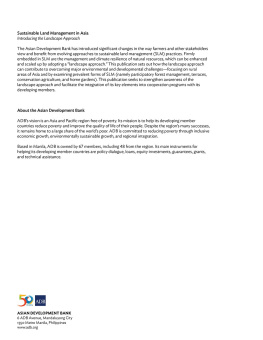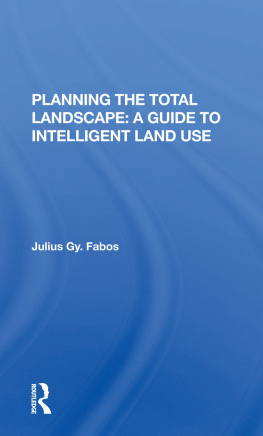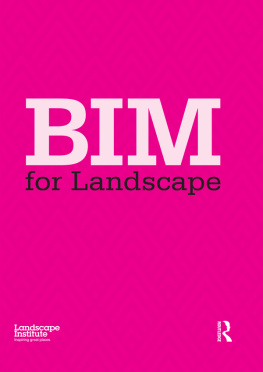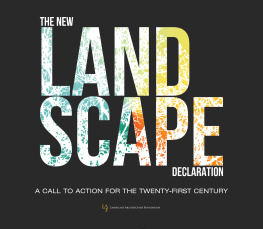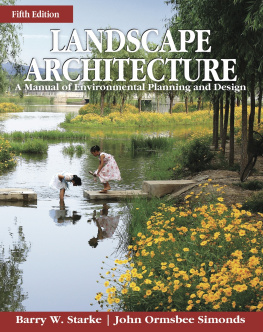Landscape Research Group Ltd, 1986
This book is copyright under the Berne Convention.
No reproduction without permission. All rights reserved.
Allen & Unwin (Publishers) Ltd,
40 Museum Street, London WC1A1LU, UK
Allen & Unwin (Publishers) Ltd,
Park Lane, Hemel Hempstead, Herts HP2 4TE, UK
Allen & Unwin, Inc.,
8 Winchester Place, Winchester, Mass. 01890, USA
Allen & Unwin (Australia) Ltd,
8 Napier Street, North Sydney, NSW 2060, Australia
First published in 1986
British Library Cataloguing in Publication Data
Landscape meanings and values.
1. Landscape 2. Nature (Aesthetics)
I. Penning-Rowsell, Edmund C.
II. Lowenthal, David
719.01 QH75
ISBN 0047100036
Library of Congress Cataloging-in-Publication Data
Landscape meanings and values.
Report of a symposium organised by the Landscape
Research Group and held on 46 April 1984 at the Royal
Institution, London, and Down Hall, Essex Pref.
Includes bibliographies and index.
1. Landscape assessment Congresses. 2. Landscape architecture Congresses. I. Penning-Rowsell, Edmund. II. Lowenthal, David. III. Landscape Research Group
(Great Britain)
GF90.L36 1986 712.01 867980
ISBN 0047100036
Set in 10 on 11 point Bembo by Nene Phototypesetters Ltd, Northampton and printed in Great Britain by Billing and Sons Ltd, London and Worcester
Changing landscapes, changing values?
EDMUND C. PENNING-ROWSELL
The issues surrounding landscape meanings and values continue to be of significance in the 21st century. But in the nearly four decades since this book was first published, in 1986, much has changed in Britain and indeed overseas.
In the UK, new National Park designations are under consideration or have been approved, representing progress in conserving the landscape heritage that these parks aim to protect. Since 1986 we have had new Parks created for the New Forest, the South Downs and the Broads in Norfolk. In 2021 we have seen proposals for additional Parks covering the Chilterns and the Cotswolds. What is interesting here is that all of these are in southern England away from areas when previously such designations were reserved for mountainous areas such as the Lake District and the Peak District. Different landscape values perhaps have been acknowledged or indeed created?
Nevertheless there are threats as well as opportunities. The first one of these is surely climate change bringing change in land use, agricultural practices and the potential for altered biodiversity. We may see, under extreme scenarios, landscape in the UK in a centurys time more characteristic of central Spain today than of the current English countryside. This, of course, will take time but it seems an inexorable process most of which we cannot stop or manage. Whether that is a disaster is a function of your point of view; landscape will still be there but it will be radically different.
One modern phenomenon that has also occurred since the production of the original book that is reproduced here is the concern to move towards renewable energy sources. Of particular significance here has been the arrival of wind turbines in upland areas, now common in areas such as the North York Moors and parts of Wales. In lowland areas we have seen the development of solar farms, some of which cover many hectares and form a very different prospect to their preexisting agricultural landscapes. But the move away from coal or gas fired power stations removes many features such as the cooling towers at Didcot and in the Trent Valley, the likes of which we will never probably see again.
Major recreational features have grown up in Britain in the last two decades, reflecting greater affluence and the desire for live amenity and recreational experiences. Football stadia have become larger and more visible, either in inner-city areas or in suburban locations, and features such as the Eden Project in Cornwall have developed, whereby landscape is created within a bubble of temperature controlled spaces. The Olympic Park in East London has turned a derelict and abandoned former industrial area into a major focus of recreational activities and residential building. Racecourse locations have become grander and larger, for example the major developments at Cheltenham.
The agricultural landscape is also changing. As Britain leaves the European Community, through a process termed Brexit, there is the possibility that British moves towards greater food self-sufficiency will affect our agricultural landscapes in ways that are not easily predictable. Subsidies for agriculture will change, probably threatening upland pasture for sheep, but bringing opportunities for more intensive landscape conservation in lowland areas. The slow move away from a meat-dominated diet will also have an effect in the future, lessening the need for grazing and increasing the need for a variety of lowland crops to provide food for an increasingly vegetarian society. Another modern trend is towards the rewilding of the landscape, which could result in traditional views in upland areas being overtaken by scrubland and informal afforestation rather than the kind of managed landscapes that we have learned to enjoy and indeed promote.


